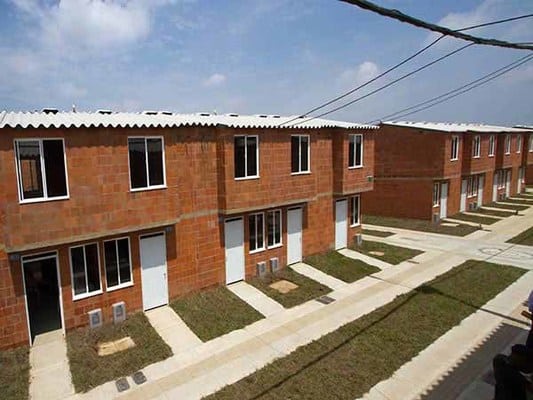▲ Hundreds of apartments are abandoned in the Lomas del Mirador neighborhood, municipality of Tlajomulco de Zúñiga, Jalisco.Photo Arturo Campos Cedillo
Javier Salinas and Silvia Chávez
Correspondents
La Jornada Newspaper
Thursday, December 19, 2024, p. 5
Zumpango. Méx., In the state of Mexico there are more than 150 thousand abandoned social housing units for various reasons, mainly in the municipalities surrounding the Felipe Ángeles International Airport (AIFA), where there are no adequate basic services, the infrastructure of the housing developments does not It was finished and they do not have enough roads; In addition, crime and invasions of these properties persist.
The thousands of houses are located in the municipalities of Zumpango, Huehuetoca, Tecámac, Ecatepec and Nextlalpan. For three six-year terms they were left abandoned and are the ones that now seek to recover government agencies as part of the federal government’s housing policy.
Currently, the Mexican government is carrying out a detailed census in order to know the exact number of properties and the mechanism by which they were financed.
In the last 25 years, in the entity the state governments, through the Secretariat of Urban Development and Infrastructure, authorized, when published in the Government Gazettethe construction of 791,508 homes for 491 new subdivisions.
During these years, the projects were concentrated in Tecámac, Zumpango, Huehuetoca, Chalco, Toluca, Ixtapaluca and Ecatepec, even before the construction of the AIFA.
He boom real estate, with a greater number of authorizations, was detonated during the six-year terms of PRI members Arturo Montiel Rojas (1999-2005) and Enrique Peña Nieto (2005-2011). The year with the most permits was 2004, when the construction of 99,011 homes for 45 subdivisions was approved.
Meanwhile, in terms of the number of apartments, in 2005 it was approved to build 79,279 for 32 housing developments; In 2003, 71,592 in 37 subdivisions, and in 2006, 69,98 were authorized for 38 units.
However, real estate development was not consolidated alongside public services because construction companies did not comply with the equipment promised in their housing offers, such as schools, roads, markets, medical services, transportation, among others.
Most of these projects were built far from urban areas where lands had previously been used for crops or livestock.
Given the poor infrastructure, its residents began to leave the urban complexes in search of better conditions.
An example of abandonment is the La Trinidad housing unit, located in Zumpango; Other cases are in Huehuetoca and Tecámac, where hundreds of homes are uninhabited and as a consequence were vandalized or invaded by individuals and criminal groups.
Casas Geo, Beta, Urbi, Alteq Construcciones, Ara and Inmobiliaria Came, among others, were the main companies that benefited from these projects; although several of them went bankrupt due to growing past due loans, increased construction costs and even financial crises.
Belts of misery
Urban complexes such as La Trinidad also gave way to the location of poverty belts. More than 8 thousand houses were built in this subdivision alone; but many of them remain abandoned. Coupled with social backwardness and lack of drinking water, for example.
In the Bosques de Tecámac subdivision, in the municipality of the same name, there are also a large number of lonely residences that have been vandalized due to a lack of interest in inhabiting them or because their owners stopped paying the loans with which they obtained them.
These properties have the risk of being invaded, as happens in the closed ones of Brazil, the Nordics, India or Canada.
In the National Housing Program 2020-2024, the Secretariat of Agrarian, Territorial and Urban Development (Sedatu) and the Institute of the National Housing Fund for Workers (Infonavit) signed a framework collaboration agreement to recover 171 thousand homes in condition of abandonment in the country, to rehabilitate them and implement urban regeneration actions in the industrial estates with the highest incidence of this social problem.
The Infonavit Community Regeneration program aims to reinsert into the secondary market homes awarded to the institute, concentrated in the municipalities with the highest rates of irregular properties, such as uninhabited, abandoned, vandalized or occupied by a third party without the consent of their legitimate owner; Furthermore, in conditions of urban and social backwardness and precarious habitability conditions.

















